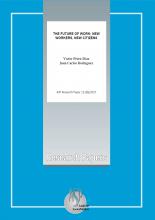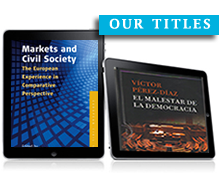The future of work: new workers, new citizens (November 2017)

This paper is the English version of “El futuro del empleo: nuevos trabajadores, nuevos ciudadanos”, published by the Rafael del Pino Foundation in March 2017.
The text builds and expands upon the discussion about the future of work that gathered a group of experts at the Rafael del Pino Foundation on November 2016 within the Foundation’s “Public Sphere” programme. See the list of participants at the end of the document. The English version was prepared to be used at the “Global Employers’ Workshop. Understanding the Future of Works. Challenges and Proposals. Madrid, 2017”, organised by the CEOE and OIE.
The paper presents the main ideas and suggestions obtained from the discussion, but expand it with a number of comments. The outline is simple. First, we set out the trends and predictions on the future of work that are usually the focus of public discussion. We then go on to consider the scale of these events, as the main proof of the reality of these changes that apparently are upon us. Thirdly, we briefly note the causes and the context of the changes. This is all a prelude to the consideration, fourthly, of how these changes will impact our lives individually and socially. This we present in terms of both the major narratives that are pitted against each other in public discussion, and a realistic, “present continuous” approach that may enable us to handle these processes of change and their consequences. How to do this is what we discuss last of all by means of a brief consideration of the public policies that could accompany and/or direct the changes that are under way so that they do not lead to undesirable future scenarios involving the breakdown of the community.
This is the summary of the paper:
Introduction
1. Trends and predictions: distinguishing between different trends
2. The scale of events
3. Factors and context: two positions for discussion
4. Consequences: two types of narratives, and their limits
5. A third possibility: the present continuous approach
6. Time for substantive policies and public discussion of them
7. Conclusion: the mode of public policy and the preservation of the community
Bibliographical references and data sources

